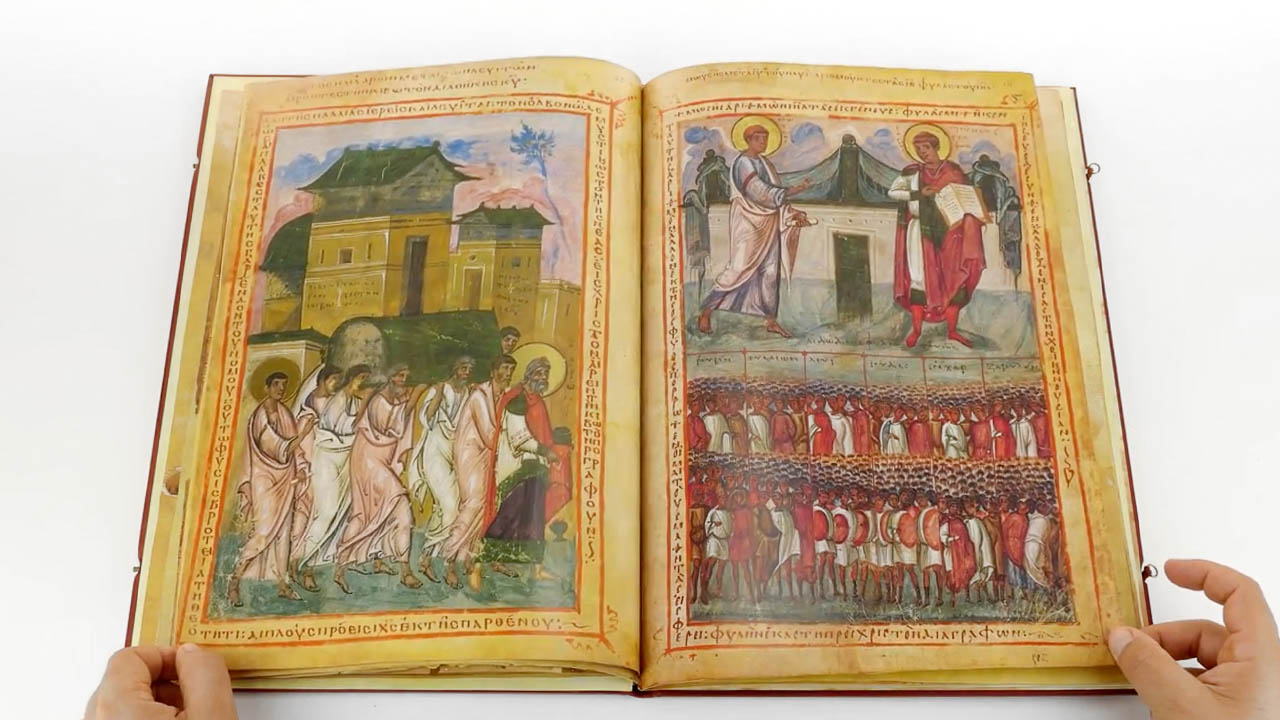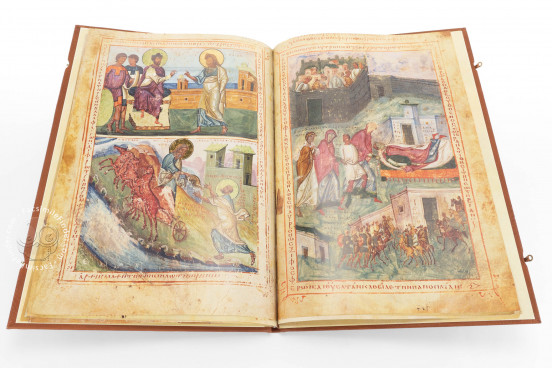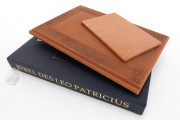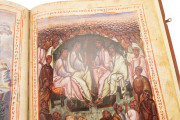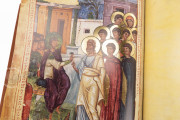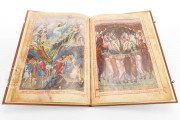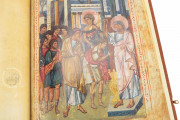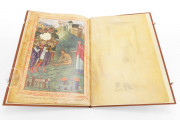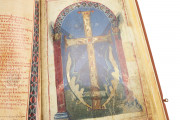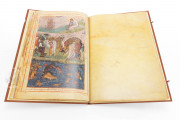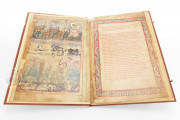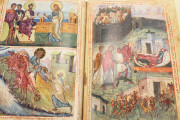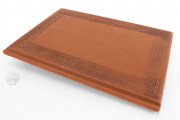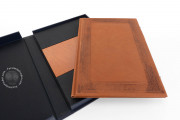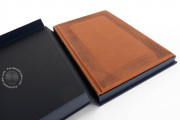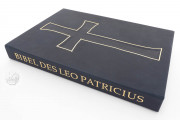Extraordinary in size and renowned for its luxurious epigrams and miniatures, the Leo Bible is probably the largest extant illuminated Byzantine manuscript. Created in the mid-tenth century, it constitutes one of the earliest surviving Bibles from the Eastern Roman empire. It is the first volume of what was originally a two-volume Christian Bible. The monumental tome contains the biblical books of Genesis through the Psalms in Greek. It boasts eighteen full-page miniatures highlighted in gold and showcasing a varied and sophisticated palette.
Although the miniatures were originally dispersed throughout the book, they were recently removed and rebound separately. The miniatures comprise five prefatory images and thirteen frontispieces to individual books of the Bible.
Monumental Miniatures
The images sometimes present narratives in two or three registers. One notable example is the story of Elijah told in two scenes—the prophet challenging King Ahab and his ascent to heaven in a fiery chariot—presented in two registers (fol. 302v).
Epigrams penned in red in fine majuscule surround most of the miniatures. All of the epigrams are in dodecasyllabic verse, and their content provides insight into how the Byzantine viewer might have understood the images.
An Elegant Bouletée Minuscule
At least three scribes wrote the scriptural text in Bouletée Minuscule, a script primarily used in large, luxury commissions. The script was thus a most appropriate choice for the Leo Bible.
Commissioned by a Eunuch
Full Bibles are unusual among Byzantine manuscripts. The Leo Bible was a prestigious undertaking, as is emphasized in the eight-page preface detailing the dedication of the book, the five full-page miniatures, and a dedicatory epigram. The patron, one Leo, is introduced in one of the prefatory miniatures (fol. 2v). His beardless face and gray hair identify him as a eunuch. Kneeling before the Virgin and dressed in a fine gold-trimmed red cape, Leo offers the Virgin a large manuscript covered in gold.
Intended for Monastic Use
An inscription identifies Leo as sakellarios, the treasurer of the realm—one of the few financially able to commission a manuscript of such size and beauty (fol. 2v). The adjoining page clarifies that he commissioned the Bible to donate to the monastery of Saint Nicholas, an institution founded by his brother Constantine, who is shown kneeling before the patron saint along with Makar, the abbot of the monastery (fol. 3r).
The Bible of Queen Christina
The Leo Bible is also known as the Bible of Queen Christina after its seventeenth-century owner. Christina (1626-1689), Queen of Sweden, was an avid collector and created an unparalleled library of rare books and manuscripts. The Leo Bible entered the Vatican collection as a part of her library in 1690.
Unfortunately, the Leo Bible, like many medieval manuscripts, lost its original binding.
We have 1 facsimile edition of the manuscript "Leo Bible": Bibel des Patricius Leo facsimile edition, published by Belser Verlag, 1988
Request Info / Price
